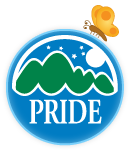Native Plants
Native Plants and PRIDE Environmental Education Contracts
PRIDE Environmental Education Contract funds may be used to purchase only native plants. The purpose of this policy is to help students recognize and appreciate local flora and prevent the escape of exotic species.
Non-native plants are not to be purchased with PRIDE contract funds. Non-native plants include most annuals and landscaping or beautification plants such as pansies and hostas.
What Are Native Plants?
- Plants that existed in an area prior to European settlement
Why Native Plants?
- Native plants have evolved over thousands of years and have adapted to the local conditions.
- They rarely need watering and flourish without fertilizers or pesticides.
- They provide food and habitat for wildlife.
- They contribute to biodiversity.
How Can Native Plants Be Used?
- To create a butterfly garden
- Incorporate native plants into an existing flowerbed
- Plant native trees and shrubs for bird habitat
- Create a wetland area for run-off prevention or wildlife habitat
How Do I Start a Native Plant Garden?
- Learn about plants native to your area
- Evaluate your conditions; soil, sunlight and climate
- Consider whether a woodland, meadow, savanna, prairie or wetland plant community is most appropriate for your conditions
How Can I Make My Native Plants SHINE?
- Start Small—Experiment with your design and planting techniques on a small scale, then use what you learn to expand each year.
- Honor Others—Be an ambassador for the native plant movement and border your garden with a fence, hedge or mowed edge as a sign that your property is being managed. This will assist your groundskeepers with learning the mowing boundaries around your native plant garden.
- Inform Others—Educate others and your students on the benefits of using diverse native species. Add welcoming elements to your garden, such as a bench or bird bath, to communicate that you are caring for the area.
- Network with Others—Learn from others and share what you learn. Get acquainted with staff at your local nature centers and visit native plant nurseries.
- Exercise Patience–Your native garden will not evolve overnight. It will grow, change and evolve over the years.
Where Can I Buy Native Plants or Learn More?
Backyard Wildlife Habitat Program: To purchase your own Backyard Wildlife Habitat kit, call 800-858-1549 and ask for the gift shop. Each kit is $12.00, plus $2.00 shipping. The kit includes instructions for developing habitat for wildlife and establishing wildflowers from seeds, nest box plans, and many more great ideas, facts and tips for turning your school grounds or yard at home into a wildlife habitat.
Shooting Star Nursery
160 Soards Road
Georgetown, KY 40324
Tel: (866) 405-7979
Toll Free: (502) 867-7979
E-Mail: ShootingStarNursery@msn.com
Salato Native Plant Program
1 Game Farm Road
Frankfort, KY 40601
Tel: (502) 564-5280
Dropseed Native Plant Nursery
1205 S. Buckeye Lane
Goshen, KY 40026
Tel: (502) 439-9033
Wild Ones Natural Landscaping
P.O. Box 1274
Appleton, WI 54912-1274
Telephone: (877) 394-9453
E-mail: woresource@for-wild.org

